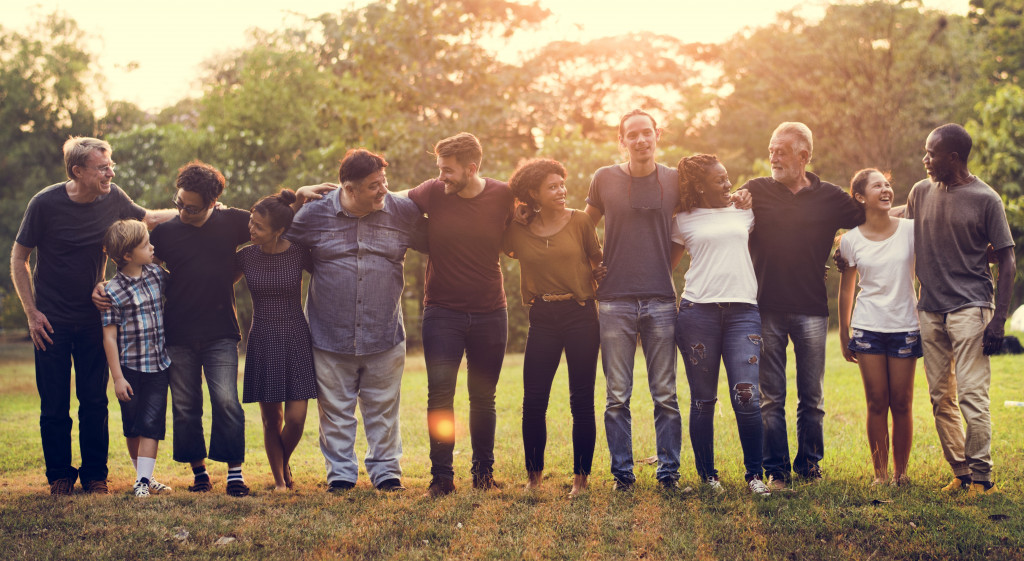- Promoting mental health education, treatment, and awareness to reduce stigma and promote inclusivity.
- Encouraging participation in physical and recreational activities to improve heart health and reduce chronic diseases.
- Providing access to nutritious food items and clean drinking water for communities in need.
- Creating outdoor spaces that promote active and healthy lifestyles. This includes parks, playgrounds, and bike trails.
- Partnering with local healthcare providers to provide preventive screenings and increase awareness of health issues.
Community improvement requires effective collaboration between different institutions and individuals. Non-profit organizations and local government units can work together to promote community health and well-being initiatives. In the spirit of enhancing community wellness and social connection, this blog outlines community improvement efforts that prioritize health and wellness initiatives.
Promoting Mental Health Education, Treatment, and Awareness.
Several non-profits and government agencies are rising to the challenge of promoting mental health education, treatment, and awareness. Mental health disorders are prevalent in today’s fast-paced world, making it necessary to invest in programs that help individuals address these disorders.
These programs reduce the stigma surrounding mental health and promote inclusivity and caring communities. They can also focus on reducing the negative effects of stress, anxiety, and depression through mindfulness practices such as meditation, yoga, and breathing exercises.
Encouraging Participation in Physical and Recreational Activities.
Physical and recreational activities provide numerous health benefits to individuals. These activities help improve heart health, reduce the likelihood of chronic diseases, and promote social interactions. Local non-profits often collaborate with government agencies to create safe environments for physical and recreational activities.
These initiatives may include creating community gardens or developing bike and pedestrian paths. Schools can also get involved by promoting activities like after-school sports programs or an annual field day to increase physical activity.
Promoting Nutrition.

Low-income neighborhoods and communities of color often experience food insecurity. Access to healthy and nutritious foods is essential for individuals to lead healthy lives, but many face significant barriers to accessing them. Fortunately, there are many things that community organizations and non-profits can do to address this issue. Here are some examples:
Provide food pantries.
Food pantries are a great way for individuals to access nutritious food items without having to worry about the cost. Food pantries can be organized in collaboration with local churches, schools, and government agencies to ensure that everyone in the community has access to healthy meals.
Support farmers’ markets.
Farmers’ markets have become increasingly popular over the past few years as an alternative source of fresh produce for communities in need. These markets create relationships between local farmers and communities, allowing individuals to access fresh fruits and vegetables at reasonable prices.
Offer nutrition education programs.
Nutrition education programs are important for teaching individuals about the importance of a healthy and balanced diet. These programs can be organized in collaboration with local schools, government agencies, and non-profits to ensure that everyone in the community has access to nutritional information.
Provide access to clean water.
Clean water is essential for people to stay healthy. Unfortunately, many communities lack access to clean and safe drinking water, making it difficult for individuals to practice proper hygiene. Government units and non-profits can install residential water treatment systems like reverse osmosis systems and water softener systems to provide individuals with access to clean and safe drinking water. These water treatment systems will not only provide individuals with access to clean drinking water but also ensure that the community is free from water-borne illnesses.
By promoting nutrition in the community, governments and non-profits can work together to ensure that everyone has access to healthy foods and clean drinking water.
Creating Outdoor Spaces that Promote Active and Healthy Lifestyles.
Creating outdoor spaces that promote active and healthy lifestyles can be an excellent way to foster community well-being. These spaces can include parks, playgrounds, and bike trails. Non-profits can also offer fitness programs for all age groups, such as boot camps, yoga sessions, or nature walks. Additionally, it’s important to make sure outdoor spaces are accessible to all members of the community, including people with disabilities, to promote inclusivity.
Partnering with Local Health Care Providers.

Local healthcare providers are a valuable resource in promoting health and wellness among community members. Non-profits can create collaborations with local hospitals or clinics to provide preventive screenings, check-ups, or vaccinations. They can also work with these providers to increase awareness of health issues such as opioid addiction or smoking cessation initiatives.
Community improvement is a complex process requiring effective collaboration between institutions and individuals. Through initiatives such as promoting mental health education, treatment, and awareness; encouraging participation in physical and recreational activities; providing access to nutritious food items and clean drinking water; creating outdoor spaces that promote active lifestyles; and partnering with local healthcare providers, you can ensure the well-being of communities.

